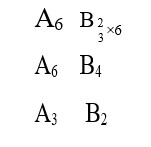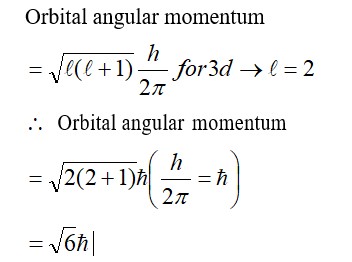Standard molar enthalpy of formation, ∆fHᶱ is just a special case of enthalpy of reaction, ∆r HV . Is the ∆r HV for the following reaction same as ∆f HV ? Give reason for your answer.
CaO(s) + CO2(g) → CaCO3(s); ∆fHᶱ = –178.3 kJ /mol
Standard molar enthalpy of formation, ∆fHᶱ is just a special case of enthalpy of reaction, ∆r HV . Is the ∆r HV for the following reaction same as ∆f HV ? Give reason for your answer.
CaO(s) + CO2(g) → CaCO3(s); ∆fHᶱ = –178.3 kJ /mol
-
1 Answer
-
This is a Short Answer Type Questions as classified in NCERT Exemplar
Standard molar enthalpy of formation, rH1- is just a special case of fH2-, where
one mole of a compound is formed from its constituent elements. In the above equation, enthalpy of formation and enthalpy of reaction is not the same.
Similar Questions for you
Kindly go through the solution
(1) [Ni (NH3)6]+2 → Ni+2 → d8, C. No. = 6,
SP3d2, Para
(2) [Co (H2O)6]+2 → Co+2 → d6, C. No. = 6
d2sp3, Dia
(3) [Ti (H2O)6]+3 → Ti+3 → d1, C. No. = 6
d2SP3, Para
(4) [Co (NH3)6]+3 → Co+3 → d5, C. No. = 6
d2sp3, Para
Taking an Exam? Selecting a College?
Get authentic answers from experts, students and alumni that you won't find anywhere else
Sign Up on ShikshaOn Shiksha, get access to
- 65k Colleges
- 1.2k Exams
- 679k Reviews
- 1800k Answers



